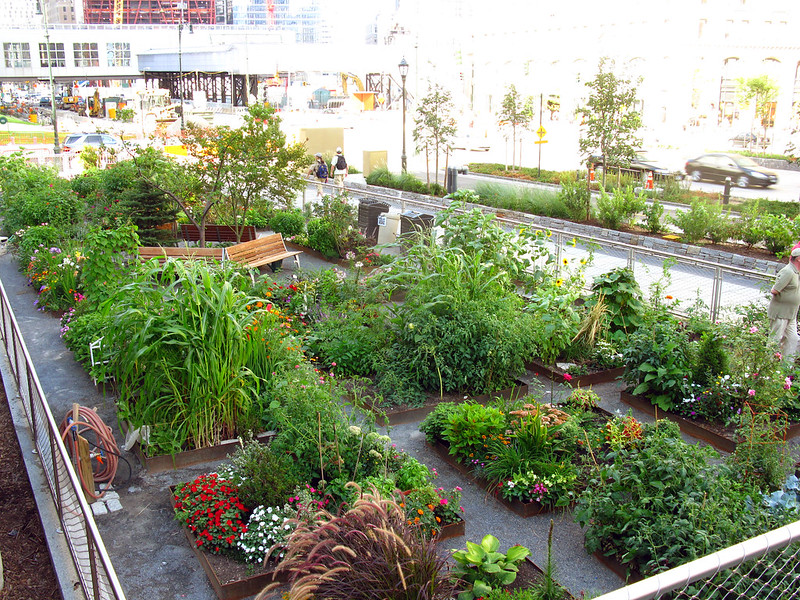Indicators on City Blooming You Should Know
Intrigued in expanding food for sale in the City of Chicago? Considering beginning a neighborhood garden? Modifications to the Chicago Zoning Statute enable agricultural uses like area yards and urban farms in several components of the city. Below is a checklist of often asked concerns pertaining to the guidelines and policies that growers must think about when planning an urban agriculture task.
The zoning modification does not modify any type of other codes managing composting, structure authorizations, acquiring or renting City had residential property, service licenses or environmental contamination. There are existing codes that regulate these issues and they stay completely effect and may be suitable to your task. Community gardens are normally owned or managed by public entities, public organizations or community-based organizations and kept by volunteers.
Urban ranches grow food that is meant to be sold, either on a not-for-profit or for-profit basis. Due to their commercial purpose, city ranches require an organization certificate.
Some Known Facts About City Blooming.
The quantity of garden compost product can not go beyond 25 cubic yards at any type of given time according to the criteria in 7-28-715 of the City's Municipal Code. Due to the fact that the soil at the majority of brand-new garden websites requires amending, compost, dirt, wood chips, or other materials can be obtained to construct or enhance the growing room.

If a structure permit is needed then the hoophouse will certainly be thought about an accessory structure. You can find out more regarding the structure permit demands by contacting the Department of Buildings. The 25,000-square-foot size restriction is planned to avoid a single area yard from dominating an offered block or diminishing the block's existing property or commercial character.
The limitation does not apply to gardens located in Public Open Space (POS) areas. Can there be even more than one community yard that is 25,000 square feet on a solitary block? Secure fencing is not called for, however, gardens that have large car park locations may be required to mount fencing or other landscape design attributes.
City Blooming - Questions
B1 & B2 areas call for that all business use tasks be performed inside. R districts restrict industrial task. The regulations mirror the function and intent of the Zoning Code. Is fence needed for metropolitan ranches? Yes. Fencings may be needed, along with landscape design and screening, for particular parking lot and outdoor work or storage space locations relying on location and the certain activity happening.
Yes. Urban ranches need building licenses and zoning authorizations prior to building. Various other types of city testimonial might be needed depending on certain frameworks, tasks, dimension, landscape design, licensing, public health and stormwater administration concerns. A lot of these needs are determined in the project style or permitting procedure, however, the applicant might be accountable to individually recognize specific licenses or allows that may be called for.
Yes. The type of license is figured out by what is happening at the site. The Department of Organization Affairs and Consumer Defense can help figure out the details sort of service permit that's needed. Yes. Off road auto parking is needed for a lot of industrial tasks in Chicago. The required number of garage is based on the number of staff members servicing website and not the square video footage of the growing area.
Not known Details About City Blooming

An urban farm can offer compost product created on website, nonetheless, the procedure has to abide with the regulations in 7-28-715 of the Chicago Municipal Code. Aquaponic systems are allowed indoors on metropolitan farms in many zoning districts.
As much as five hives or swarms of honey bees may be kept as an accessory usage. Nonetheless, beekeepers need to register with the Illinois Division of Farming. To find out more about the recommended zoning change you may call the Division of Housing and Economic Development, Bureau of Preparation and Zoning at 312.744.8563.
, which takes place in rural areas at the side of residential areas.
The Ultimate Guide To City Blooming
, that seek to form social networks click here for more established on a shared ethos of nature and neighborhood holism. These networks can develop by means of formal institutional assistance, becoming incorporated into neighborhood community preparation as a "transition town" motion for sustainable city development.
Some of the initial proof of metropolitan agriculture comes from Mesopotamia.
Comments on “Some Known Incorrect Statements About City Blooming”